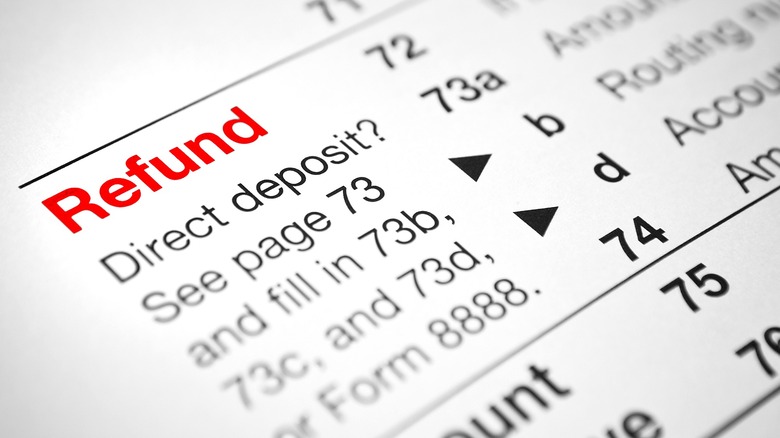The Little-Known Tax Deduction That Could Increase Your Refund
Once the new year arrives, that means the start of tax season isn't too far off. Typically, the season begins in late January and ends in mid-April. And for many, filing taxes also means getting a tax refund. In 2023, the IRS issued over 59 million refunds, with the total average amount refunded $2,903. Your tax deductions have a say in how much you might owe the IRS or get back in return, and while you might know that charitable donations are tax-deductible, you might not be aware of two little-known tax deductions: gifting appreciated assets and making qualified charitable distributions.
For anyone who's never claimed charitable giving on their taxes before, it should be noted that all donations are tax-deductible. In order to claim a deduction, your charitable donation must meet two criteria: 1) you donated to a 501(c)(3) organization, i.e., a tax-exempt organization recognized by the IRS, and 2) you didn't receive anything in return for your donation. If your donation doesn't meet these requirements, then you won't be able to itemize them.
Of course, people don't donate purely for the tax benefits. Donating to charitable causes is a good deed that doesn't expect anything in return (hence, the second criterion for the tax deduction). This being said, when it comes to filing your taxes, you could do both: give and help those who need it, while also giving in a way that's tax-smart.
Gifting appreciated assets (such as stocks)
If you own publicly traded stock, you could donate it to a qualified charity, while at the same time avoid the capital gains tax you may be liable for if you sold the appreciated asset for a profit. When you gift appreciated assets like stock, you can get a deduction equal to the fair market value of the asset.
In this way, you will not only avoid paying taxes but you'll get a considerable deduction as well, should you itemize your charitable giving in your tax return (versus take the standard deduction). Most importantly, though, the charity will receive the full value of your gift instead of what you'd donate if you sold the asset and then donated the proceeds after paying the capital gains tax (and possible Medicare surtax).
Things to keep in mind with this tax-smart donation, make sure the organization accepts stock as donations. For example, schools, hospitals, and various nonprofits can accept stock. Also, to receive the fair market value for your appreciated asset, it has to be a long-term asset, meaning, you've held it for over a year. According to Charles Schwab, if an asset is less than a year old, then you'll only be able to deduct the purchase price of the stock, not the appreciated value. As for the deduction itself, as a noncash donation, the highest amount you may deduct is 30% of your adjusted gross income.
Making a qualified charitable distribution
This second little-known tax deduction applies to a specific group of gift-giving taxpayers: anyone who's 70 ½ years of age or older and has an individual retirement account. If this describes you, then you could donate to a qualified charity and lower your taxable income at the same time. You can do so by making a qualified charitable distribution, or QCD. With a QCD, you donate directly from your IRA. What's more, you don't even need to itemize this deduction on your return to get the tax break, since you don't need to report the distribution as taxable income.
Further, once you turn 73, the IRS requires you to start taking withdrawals from your IRA, which would normally count as income on your tax return. However, if you make your required minimum distribution (RMD) your QCD, you can avoid paying taxes on this money. Note that failure to take out an RMD by the deadline will result in a 25% penalty.


